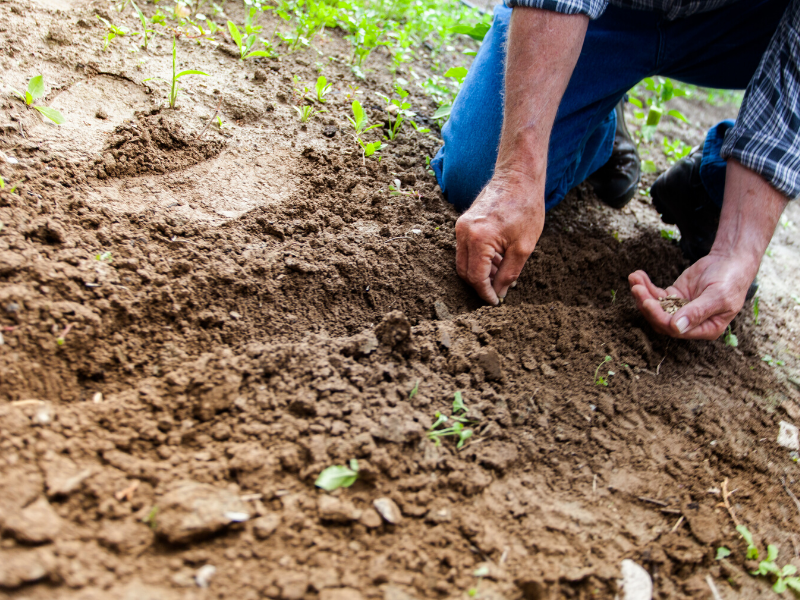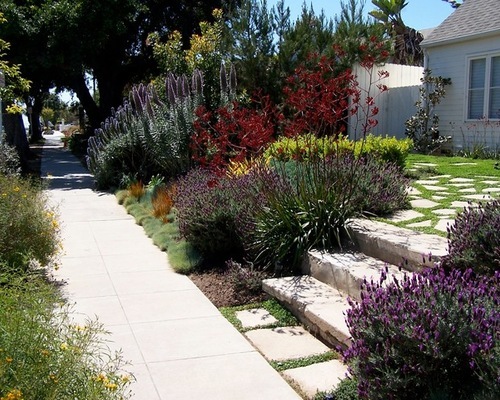Celebrating Earth Day at Home


This year’s Earth Day will certainly look different than in years past. With no large gatherings, marches or events, most of us find ourselves celebrating from home. Fortunately, when it comes to reducing your footprint or assessing the eco-friendliness of your lifestyle, your living space is a great place to start. Here are some tips for celebrating Earth Day from home.
Outside the house:
The combination of spring weather and current shelter and stay-at-home orders have created a gardening renaissance. With April being gardening month and the amount of time we find ourselves spending at home these days, now is the perfect time to start (or get back to) your garden.
- Kick up your composting efforts or build out a composting area in your garden.
- Get started with a nature DIY project, like a garden shed or planter boxes.
- Make your garden your own escape. This is more important now than ever, for your health and the health of your household.
Around the house:
- Perform a plastic audit of your home.
- Take count of the plastic items used in your kitchen and bathroom and rethink their necessity.
- Get in the habit of turning lights off when you leave a room.
- Little by little this can add up and is an easy green practice for Earth Day and beyond.
- Turn off the faucet when you aren’t using it.
- Unplug your appliances after using them.
- They still use energy even when they aren’t turned on.
- Turning off phones, tablets, and computers at night will save energy.
- Use cold water to wash your laundry.
- This sidesteps any of the energy your machine uses to heat water—which is a large percentage of their energy output.
- Add plants.
- This has a myriad of benefits for both your health and your wallet.
- Plants are known to reduce stress and regulate temperature, which saves on the energy required to heat and cool your house.
By doing these little things around the house you can maximize your Earth Day impact and get an idea of how you can incorporate them into your lifestyle as time goes on.
Educate:
Earth Day carries educational significance as well. Learning more about our planet and how we can do our part in its health moving forward is an important aspect of the holiday.
- Though you may not be able to attend a lecture in person, there are a bevy of virtual options to participate in Earth Day learning and planetary education. Discuss with your family what actions you can take to make a difference in your household.
- Add a nature documentary or series to your watchlist.
- Travel from home with virtual tours of national parks and natural wonders.
- Try some new cookbooks. For Earth Day-centric food ideas, look for cookbooks with plant-based recipes.
Homeowners everywhere have established an evolved relationship with their homes in recent weeks. Spending time thinking about the footprint of your household and how it allows you to make eco-friendly choices is a worthy investment for Earth Day and beyond.
3 Garden Alternatives for a Patchy Lawn


I’ve met with more than one client while standing on a struggling lawn. “I keep trying,” they tell me, “but the grass won’t grow.” I tell them that maybe this means there’s another option, something even better than a lawn. Maybe it’s time for a garden. And it’s as if I’d just told them the secret to eternal happiness and long life.
Still Have Hope for Greener Grass? Ask a Lawn Professional
Don’t keep tossing grass seed on your bare lawn. Instead, put a garden there, or at least plant something that has a better chance of surviving. Here are three situations where a languishing lawn may call for a new vision — a self-supporting garden that wildlife will love to call home.
BE Landscape Design, original photo on Houzz
1. Blazing sun. Whether it’s out in the open on a flat grade, on a slope or atop a hill, lawn just never does well in hot sunshine. It burns away each August, opening up holes for advantageous weeds to move in.
You could seed or plant drought-tolerant native grasses like sideoats grama and blue grama (Bouteloua curtipendula and B. gracilis) and little bluestem (Schizachyrium scoparium). Or try sedges like shortbeak and Bicknell’s (Carex brevior and C. bicknellii). And while you’re at it, get some flowers. If it’s a larger area, think self-sowers like upright prairie coneflower (Ratibida columnifera), black-eyed Susan (Rudbeckia hirta) and skyblue aster (Symphyotrichum oolentangiense). For smaller areas, ‘October Skies’ aromatic aster (S. oblongifolium ‘October Skies’) works well, along with pale purple coneflower (Echinacea pallida), purple and white prairie clover (Dalea purpurea and D. candida), many species of Baptisia, and more.
Try to create a base layer of sedges and grasses that will work to mulch and cool the soil, adding clumps or drifts of flowers among them for seasonal interest and pollinator action.
Attract Pollinators for a Productive Edible Garden
2. Ponding water. After a heavy — or even moderate — rain, water may collect in an area of your lawn, drowning grass for days or even weeks. When that water finally vanishes, you’re left with barren soil that’s both unsightly and open to weed invasion.
This sounds like an area where rain garden plants may work. These are the plants that thrive in the boom-bust cycle of spring and fall flooding with dry summers. Swamp milkweed (Asclepias incarnata), Virginia mountain mint (Pycnanthemum virginianum), Joe Pye weed (Eutrochium purpureum), switchgrass (Panicum virgatum), muskingum sedge and fox sedge (Carex muskingumensis and C. vulpinoidea), New England aster (Symphyotrichum novae-angliae), queen of the prairie (Filipendula rubra), white turtlehead (Chelone glabra), and Culver’s root (Veronicastrum virginicum) are all good options.
If it’s a large area and you want privacy, a shrub hedgerow is an option. Plant redtwig dogwood (Cornus sericea), red or black chokeberry (Aronia arbutifolia and A. melanocarpa), or elderberry (Sambuca sp.) — they will slowly sucker to form a massive bird and native bee habitat.
3. Dark or dappled shade beneath a tree. Trees are great: They cool homes, clean the air and provide for so much wildlife. Oaks (Quercus spp.), maples (Acer spp.), elms (Ulmus spp.) and willows (Salix spp.) are near the top in serving a diversity of pollinators and other insects, specifically, that use the leaves and blooms at different life stages. But grass doesn’t often grow underneath these tall trees — mostly because they cast dense shade.
If you have rich, moist to medium soil, there are many spring ephemerals to choose from: Dutchman’s breeches (Dicentra cucullaria), trillium (Trillium spp.), shooting star (Dodecatheon meadia), yellow trout-lily (Erythronium rostratum) and Virginia bluebells (Mertensia virginica).
For gardeners with dry clay soil, early meadow-rue (Thalictrum dioicum), zigzag goldenrod (Solidago flexicaulis), calico aster (Symphyotrichum lateriflorum) and wild geranium (Geranium maculatum) are solid choices. Sprengel’s sedge (Carex sprengelii) is a grass-like option.
If you don’t want a large bed of strictly plants, weave a path of mulch or stepping stones through. Place a chair or two, a hammock, or a potting bench.
It’s always important to carefully research the plants before you buy them to make sure that they suit your conditions. Clay soil is different from sand or rocky loam, and while some plants may do well in several kinds of soil and light conditions, others won’t. You may also prefer plants that create short drifts rather than tall ones, or vice versa, or clumping plants instead of aggressive spreaders.
When you take the time to carefully match the plant to the site and your region, you’re setting yourself up for more success and beauty with less maintenance — unlike sowing grass seed over the same area year after year.
By Benjamin Vogt, Houzz
For more information on Windermere Evergreen please contact us here.
 Facebook
Facebook
 Twitter
Twitter
 Pinterest
Pinterest
 Copy Link
Copy Link